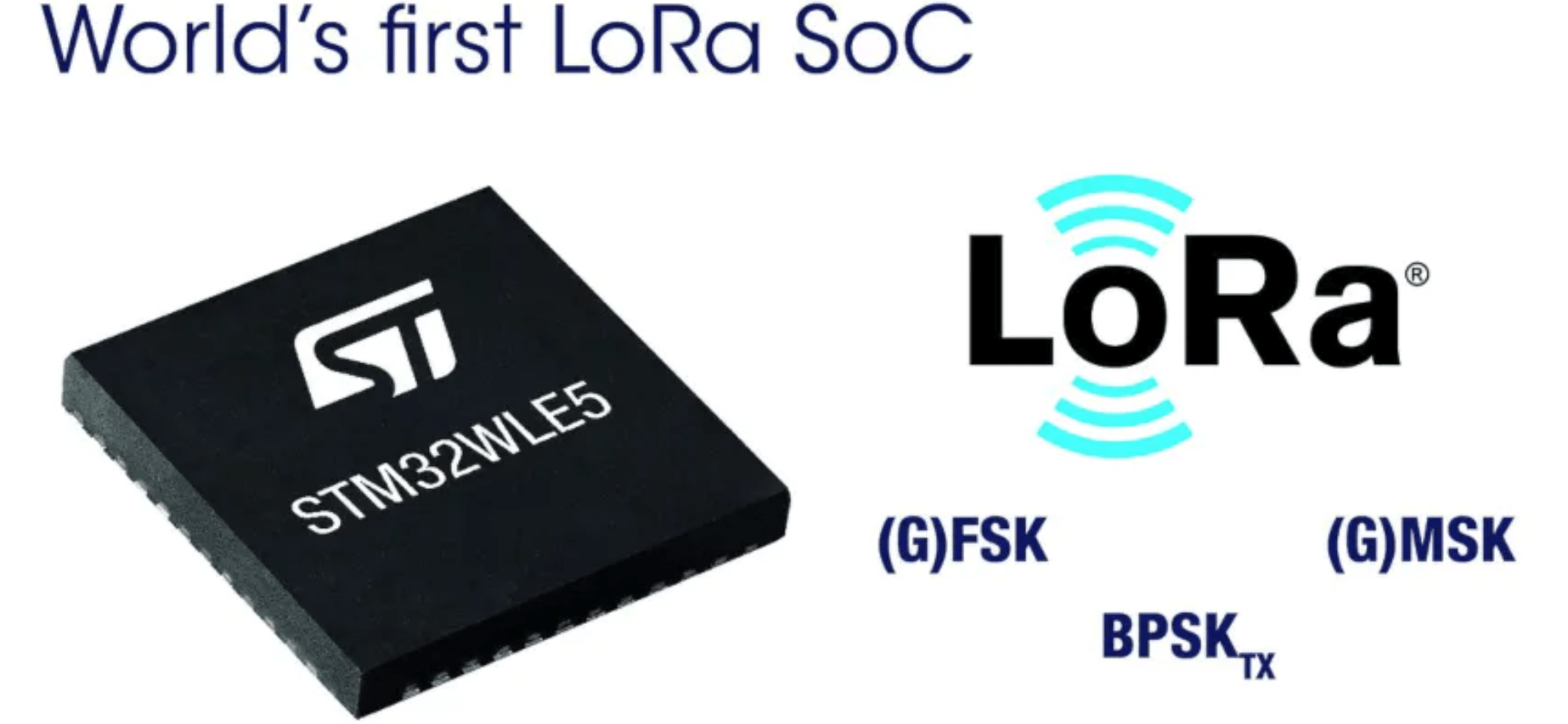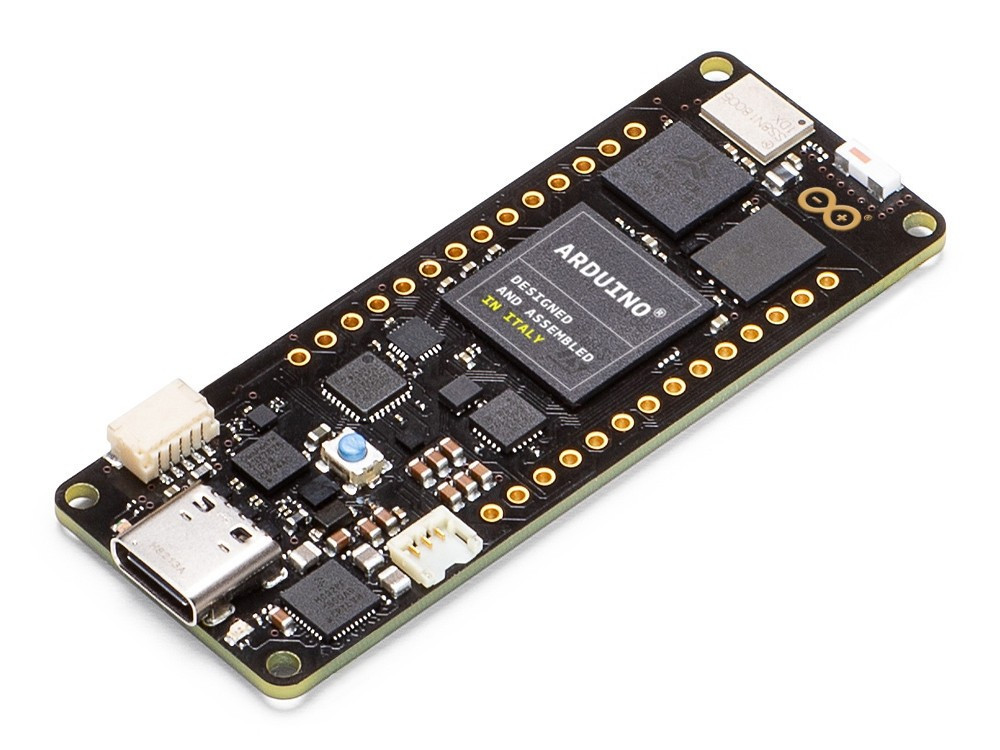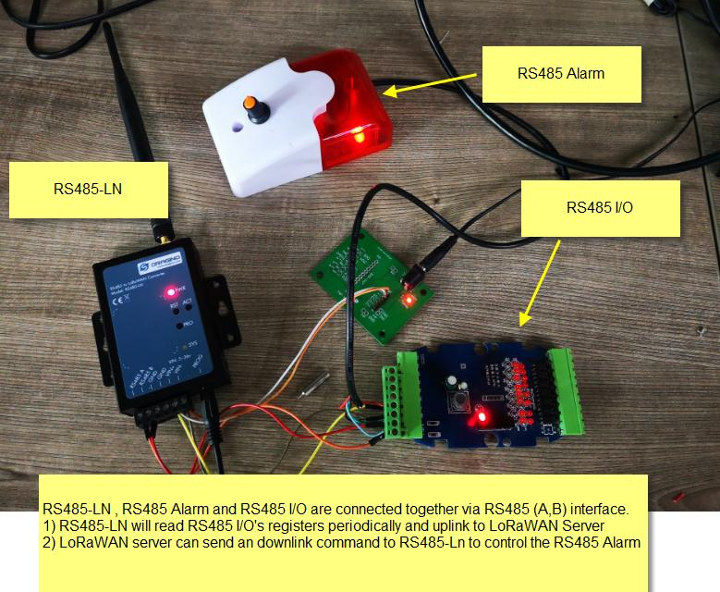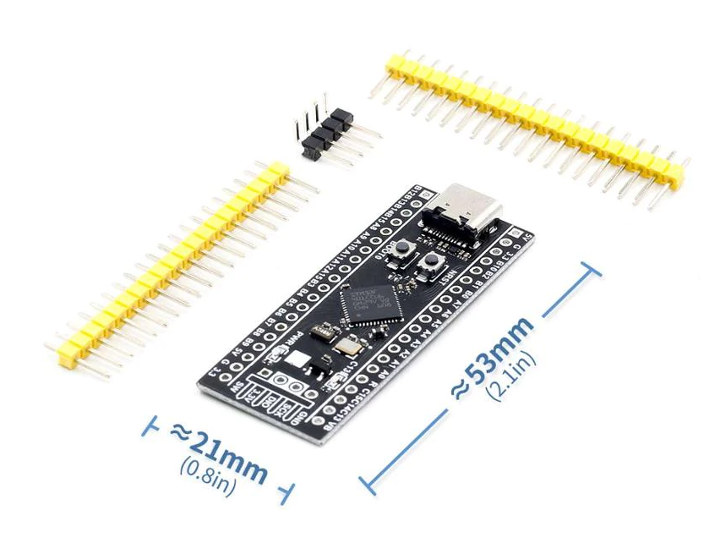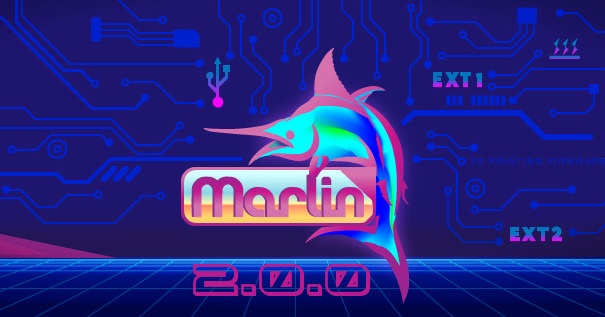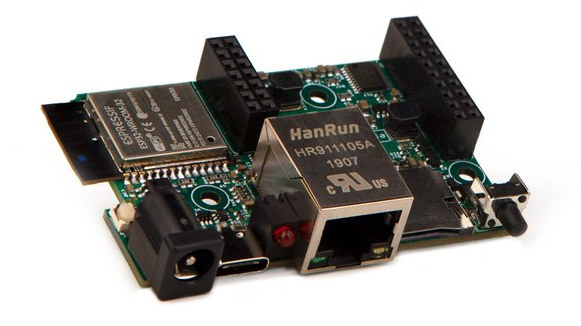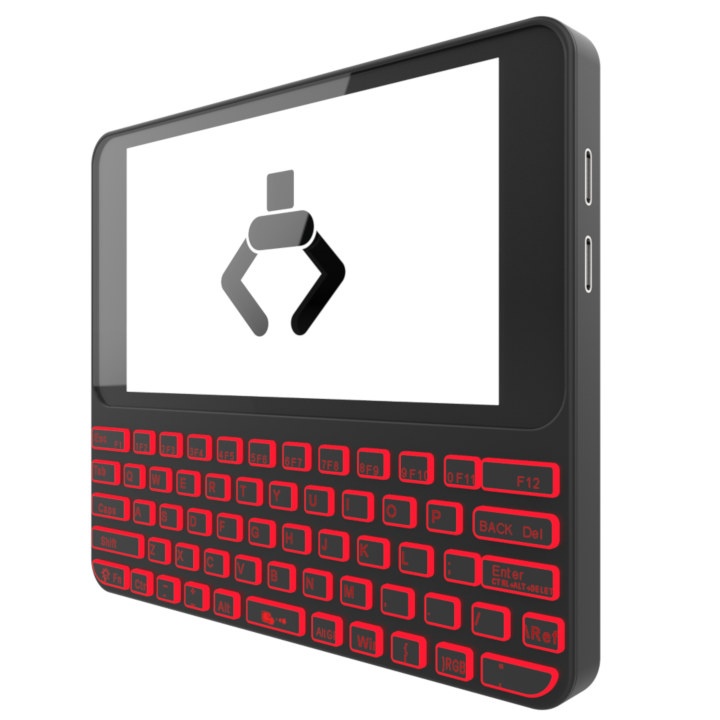There is no denying that the Internet of Things is going to disrupt a lot of markets and it’s already happening to some extent. The question being asked is: “What IoT connectivity technology will lead this disruption era?”. One major technology in this connectivity race is LoRa. LoRa’s long-range, low-power, small footprint, simplicity, and the amazing community backing it, have allowed it to find its way into various applications while gaining for the top LPWAN IoT connectivity technology. STMicroelectronics, one of the biggest semiconductor manufacturer, also believes in the potential of LoRa with the launch of STM32WL, making it the World’s first die-integrated LoRa System-on-Chip. Traditional LoRa embedded platforms usually involve the need for a separate MCU chip and different LoRa transceiver chips either coupled together in one single package or separately. This undoubtedly adds extra design complexity, size, and even cost. STMicro hopes to address this with their STM32WL SoC. […]
Arduino Portenta H7 STM32H7 Cortex- M7/M4 Industrial Board Runs Arduino Code, Python and JavaScript
Arduino is now at CES 2020 promoting its Arduino Pro all-in-all IoT solution for professionals with the Arduino Pro IDE, Arm Pelion IoT platform for device management, and a new Portenta industry-grade board family starting with Arduino Portenta H7 board powered by STMicro STM32H7 dual-core Arm Cortex-M7/M4 microcontroller. Arduino Portenta H7 Specifications: Microcontroller – STMicro STM32H747XI Cortex-M7 @ 480 MHz + M4 @ 200 MHz MCU with 2MB dual-bank Flash memory, 1 MB RAM, Chrom-ART graphical hardware accelerator System Memory – 2MB SDRAM (upgradeable up to 64MB) Storage – 16MB QSPI NOR Flash (Upgradeable up to 128MB) Connectivity 2.4GHz WiFi 802.11b/g/n up to 65 Mbps and Bluetooth 5.1 BR/EDR/LE via Murata 1DX module On-board 10/100M PHY Video I/F – MIPI DSI & 8-bit camera interfaces via 80-pin expansion connector, DisplayPort over USB-C port USB – 1x USB 2.0 Type-C port for power (PD), programming, and DisplayPort output I/Os Arduino MKR […]
MYIR Launches SoM & Development Board based on STM32MP1 Microprocessor
MYIR, the Chinese based company that has developed several ARM-based hardware solutions, has introduced a new SoM powered by the ST’s STM32MP1 microprocessor called the MYC-YA157C CPU Module with an accompanying development board known as the MYD-YA157C development board. Early last year, STMicro announced the introduction of the STM32MP1, the first STM32 MPU (Microprocessor Unit) that features one or two Arm Cortex-A7 cores running Linux, as well as an Arm Cortex-M4 real-time core making it possible to use previous STM32 codes on the new unit. Although, less than 1-year-old, the STM32MP1 microprocessor has since be deployed on a couple of development boards like the STMicro’s own discovery kits and evaluation platform, Emtrion emSBC-Argon, PanGu single-board computer, and even octavo systems unveiled the OSD32MP15x system-in-package. One primary observation with these other developments boards is their relatively steep cost, and something MYIR aims to address. MYiR MYC-YA157C STM32MP1 CPU Module The MYC-YA157C […]
Dragino RS485-LN Brings LoRaWAN Connectivity to RS485 Sensors
RS485 sensor nodes are often used in smart agriculture, environment monitoring, or factory & building automation and work up to 1.2 km when using AWG 18 cables. If you already have such nodes but need to extend the distance, or would like to reduce the need for long cables, you could make use of Dragino RS485-LN RS485 to LoRaWAN converter which will work up to 10+ kilometers depending on conditions. Dragino RS485-LN key features & specifications: MCU – STMicro STM32L072CZT6 Arm Cortex-M0+ microcontroller MCU @ 32 MHz with 192 KB Flash, 6 KB EEPROM, 20 KB RAM Connectivity LoRaWAN Via SX1276 LoRa transceiver Frequency Range: Band 1 (HF): 862 ~ 1020 MHz Band 2 (LF): 410 ~ 528 MHz Bands – CN470/EU433/KR920/US915/EU868/AS923/AU915/IN86/RU864 168 dB maximum link budget. +20 dBm – 100 mW constant RF output Programmable bit rate up to 300 kbps. High sensitivity: down to -148 dBm. RS485 to […]
$3 STM32 “Black Pill” Board Features STM32F4 Cortex-M4 MCU, Optional SPI Flash
STM32 “Blue Pill” is a popular and cheap (>$2) development board based on STMicro STM32F103C8T6 Arm Cortex-M3 microcontroller and programmable with the Arduino IDE. I’ve just been informed that the board got an upgrade of sorts with a “Blue Pill 2” board featuring either STM32F401CCU6 or STM32F411CEU6 Arm Cortex-M4F microcontroller, and a USB Type-C port for power and programming. It’s black, so instead, I’ll call Black Bill as some others appear to do. Specifications for the Blue Pill & Black Pill boards (new features in bold): MCU (one of the other) STMicro STM32F103C8T6 ARM Cortex-M3 MCU @ 72 MHz with 64KB flash memory, 20KB SRAM. STMicro STM32F401CCU6 Arm Cortex-M4F MCU @ 84 MHz with 256 KB flash, 64KB SRAM STMicro STM32F411CEU6 Arm Cortex-M4F MCU @ 100 MHz with 512KB flash, 128KB SRAM Storage – Footprint for SPI flash USB Blue Pill – 1x micro USB port for power and programming […]
Marlin 2.0 Open Source 3D Printer Firmware Finally Released
Back in June, we wrote about Marlin 2.0 firmware supporting ESP32 3D printer board, but at the time the firmware was still in RC1 (Release Candidate) phase. I was informed Marlin 2.0 firmware had been in beta for several years now, but the good news is that Marlin 2.0.0 open-source 3D printer firmware has now been officially released. Some of Marlin 2.0.0 new features include: 32-bit support with several boards including Arduino DUE (SAM3X8E), Adafruit Grand Central (SAM5D), Smoothie / SBASE / EZBoard based on NXP LPC176x, SKR Mini powered by STM32, as well as ESP32 boards Some improvements were made to some AVR boards including Melzi (ATmega 1280), RAMPS (ATmega 2560), and RAMBo / miniRAMBo / Einsy RAMBo boards PlatformIO build environments for supported boards VSCode “Auto Build Marlin” extension for one-click build Power-Loss Recovery for SD print jobs Magnetic Parking Extruder support Magnetic Switching Toolhead and Toolchanger support […]
esp32MX-E ESP32 Board Comes with Ethernet and USB-C Ports (Crowdfunding)
We’ve already covered several ESP32 boards with Ethernet including Olimex ESP32-GATEWAY and Silicognition wESP32, and I’ve just noticed Espressif also made its own with ESP32-Ethernet-Kit. Modtronix Engineering has another take with esp32MX-E board that beside Ethernet also exposes a USB-C port, a MicroSD card slot, and also adds an STM32F0 microcontroller acting as an I2C I/O expander. esp32MX-E specifications: Wireless Module ESP32 dual-core LX6 microprocessor at 160 or 240 MHz, 4 MB Flash, 520 KB SRAM Wi-Fi 4 802.11 b/g/n Bluetooth 4.2 BR/EDR & BLE Storage – MicroSD card slot USB – USB Type-C connector for programming, power, and Virtual COM port Expansion via 14-pin and 20-pin female headers 22x I/O pins of which 4 are inputs only. 4x 5 V tolerant I/O pins Not all I/Os are available when the SD Card is used Programmable pull-up and pull-down resistors on most inputs Secondary MCU – I²C I/O expander implemented […]
Pocket Popcorn Computer Handheld Linux Computer Looks Like an Improved, Faster PocketCHIP (Crowdfunding)
PocketCHIP was a Linux handheld computer powered by Allwinner R8/GR8 Cortex-A8 based CHIP board. The battery-powered device came with a small resistive display, 512 MB RAM, 4GB NAND flash, and a keyboard allowing to run Debian with PICO8 GUI so you could play retro games, access the terminal and so on. But since Next Thing Co folded last year the products are not available anymore. Since the designs were open source, Source Parts first tried to resurrect the board via their slightly modified Popcorn Computer but the Kickstarter campaign was unsuccessful. The company is now attempting to bring back PocketCHIP (sort of) with Pocket Popcorn Computer (abbreviated as Pocket P.C.) with a new design, and a much more powerful quad-core Cortex-A53 processor and overall better specs. Pocket Popcorn Computer specifications: SoC – Allwinner A64 quad-core Arm Cortex-A53 CPU with Arm Mali-400MP2 GPU System Memory – 2GB DDR3 RAM Storage – […]


